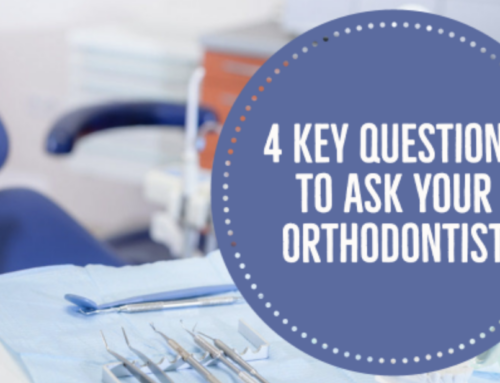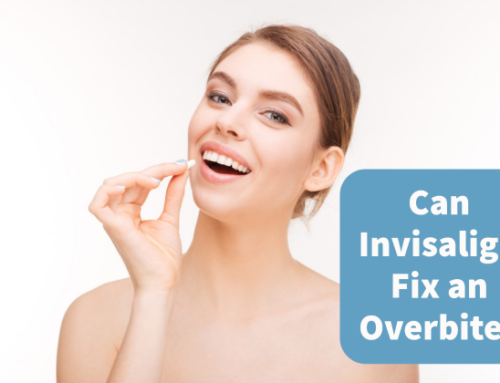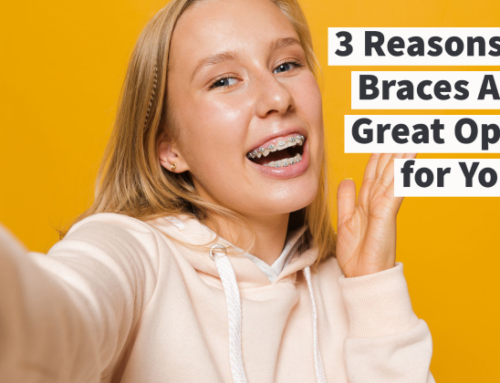 According to the American Association of Orthodontics, about four million Americans currently wear braces. Braces help correct issues such as incorrect jaw position, crowded or crooked teeth, overbites, and underbites. There’s a growing number of people making the switch from traditional metal braces to Invisalign aligners. Here are a couple of reasons why these aligners offer better orthodontic care for your kids.
According to the American Association of Orthodontics, about four million Americans currently wear braces. Braces help correct issues such as incorrect jaw position, crowded or crooked teeth, overbites, and underbites. There’s a growing number of people making the switch from traditional metal braces to Invisalign aligners. Here are a couple of reasons why these aligners offer better orthodontic care for your kids.
Increased Safety
Conventional metal braces make use of wires and protruding metal bits that may scratch or puncture the gum or parts of the mouth. With Invisalign, the need for metal components is eliminated. Invisalign aligners do not include sharp edges or bits that stick out, so they ensure smooth and safe use. Clear braces reduce the overall damage typically caused by metal braces, including cavities or gum disease.
Better Aesthetics
Metal braces have a bit of a bad reputation when it comes to how they look. They tend to stand out and make the wearer feel awkward. Invisalign aligners are virtually invisible and allow the wearer to continue living a normal life. These aligners are more aesthetically pleasing than their metal counterparts.
Fewer Food Restrictions
Wired, metal braces are a real buzz kill when it comes to limiting the types of food someone can eat. Sugary, starchy foods tend to generate plaque acid that can lead to tooth decay and gum disease while chewy, sticky foods such as fudges, toffee, and caramel can loosen brace brackets and lead to wire damage. With Invisalign aligners, patients can eat whatever they want by simply removing the aligners before eating and placing them back after the meal.
Shorter Treatment Time
The treatment time for metal braces tends to take anywhere between 18 months to a few years, depending on factors such as type of treatment, age, and personal needs. With Invisalign aligners, treatment times typically take a year to 18 months to get the job done. In some instances, you can start seeing results in a matter of weeks.
Easier Care
Conventional metal braces need a lot of care since they have numerous tiny spaces where food can get trapped and cause plaque build-up. Due of this, it’s imperative to brush and rinse after every meal, including snacks. With Invisalign aligners, it’s as simple as taking them out, giving them a proper brush, brushing your teeth, and popping them back in. Thanks to the ease of care of these removable oral appliances, it’s far less likely to develop cavities or cause damage to your teeth.
Fewer Surprises Along the Way
Wired braces have a bit of a trial-and-error reputation. Often, the metal wire needs realignment to maintain the right kind of pressure to move teeth into proper position. Treatment plans for Invisalign braces are fully computerized, so patients receive an estimate of how long they’ll need the aligners. Even when replacing an Invisalign retainer, patients don’t typically need to take another impression because a digital one will still be available.
More Freedom
Certain restrictions come with metal braces as some co-curricular activities become no-go zones. The fact that Invisalign aligners are removable means that they offer flexibility. Playing sports, especially contact sports or playing wind musical instruments (think the trombone or French horn), becomes a lot easier and less painful.
Greater Comfort
Protruding wires tend to catch and scratch the tongue and gum, causing unpleasant lacerations. There’s also the fact that conventional wired braces take up a lot of space and tend to alter someone’s speech pattern slightly. Invisalign braces are entirely smooth and mold according to the shape of the teeth. This fantastic feature makes aligners a lot more comfortable to wear without the potential risk of injury.
Invisalign aligners carry lots of advantages over traditional metal braces. It’s not purely about the outward improvements they make but also the peace of mind that they offer users. Invisalign is already a popular choice among many patients and will undoubtedly continue to play a critical part in the future of orthodontics.



